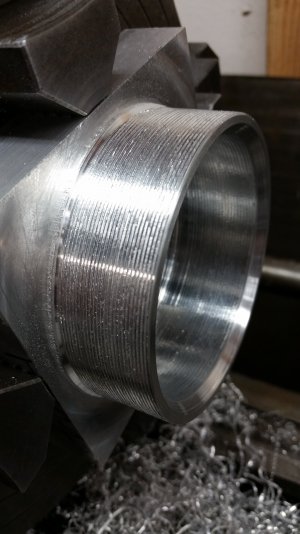The project is to create a thread 6061 adaptor for a telescope focuser. The telescope in place back thread is m68x1 metric male external thread and the focuser is m90x1 metric female. I envision a disk 1/4 to 3/8 thick with external threads and internal threads to screw onto the scope and allow the focuser to screw onto.
The question is: given a blank disk with appropriate starting diameters; what is the best way to maching the threads?
What I have thought of is to machine the inner threads into a larger blank, sufficient in size to support being mounted for threading. Then to create a threaded jig to hold the blank by the inner threads, then to finish machine the outer diameter and then the outer threads.
I would appreciate any flaws to avoid in the above method and / or any alternative methods.
I have a lathe with 3 and 4 jaw chucks of sufficient size and a face plate. Accuracy for the project is important.
(Would mounting the disk blank on offsets on the face plate be a better alternative? )
This project is a couple of weeks out so based on the advice I will start to order material .
Thank is advance, Dan
The question is: given a blank disk with appropriate starting diameters; what is the best way to maching the threads?
What I have thought of is to machine the inner threads into a larger blank, sufficient in size to support being mounted for threading. Then to create a threaded jig to hold the blank by the inner threads, then to finish machine the outer diameter and then the outer threads.
I would appreciate any flaws to avoid in the above method and / or any alternative methods.
I have a lathe with 3 and 4 jaw chucks of sufficient size and a face plate. Accuracy for the project is important.
(Would mounting the disk blank on offsets on the face plate be a better alternative? )
This project is a couple of weeks out so based on the advice I will start to order material .
Thank is advance, Dan

